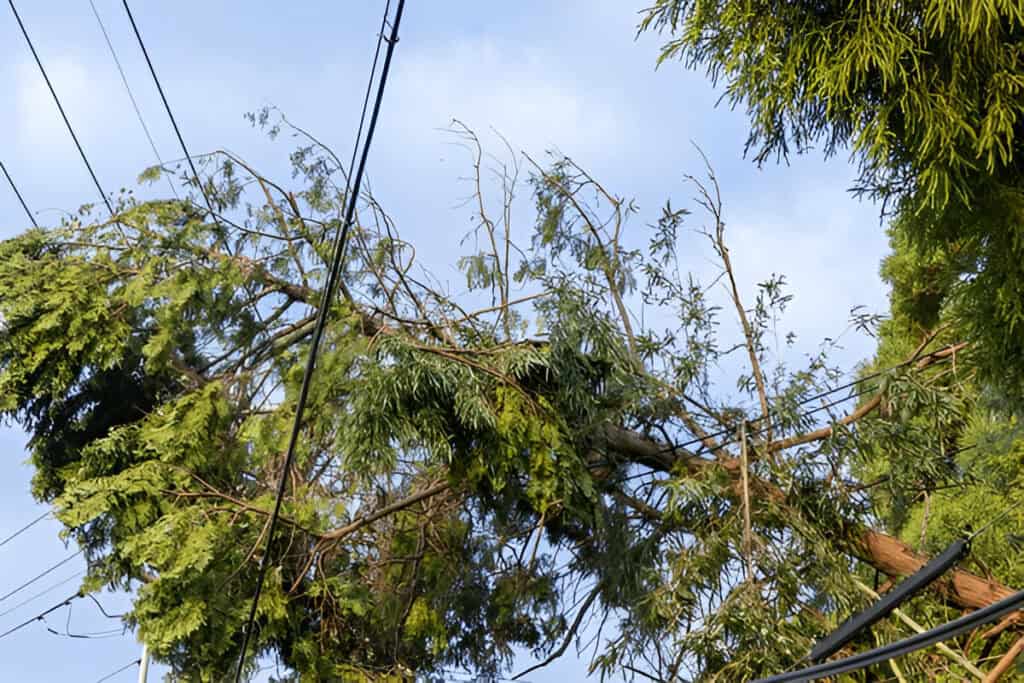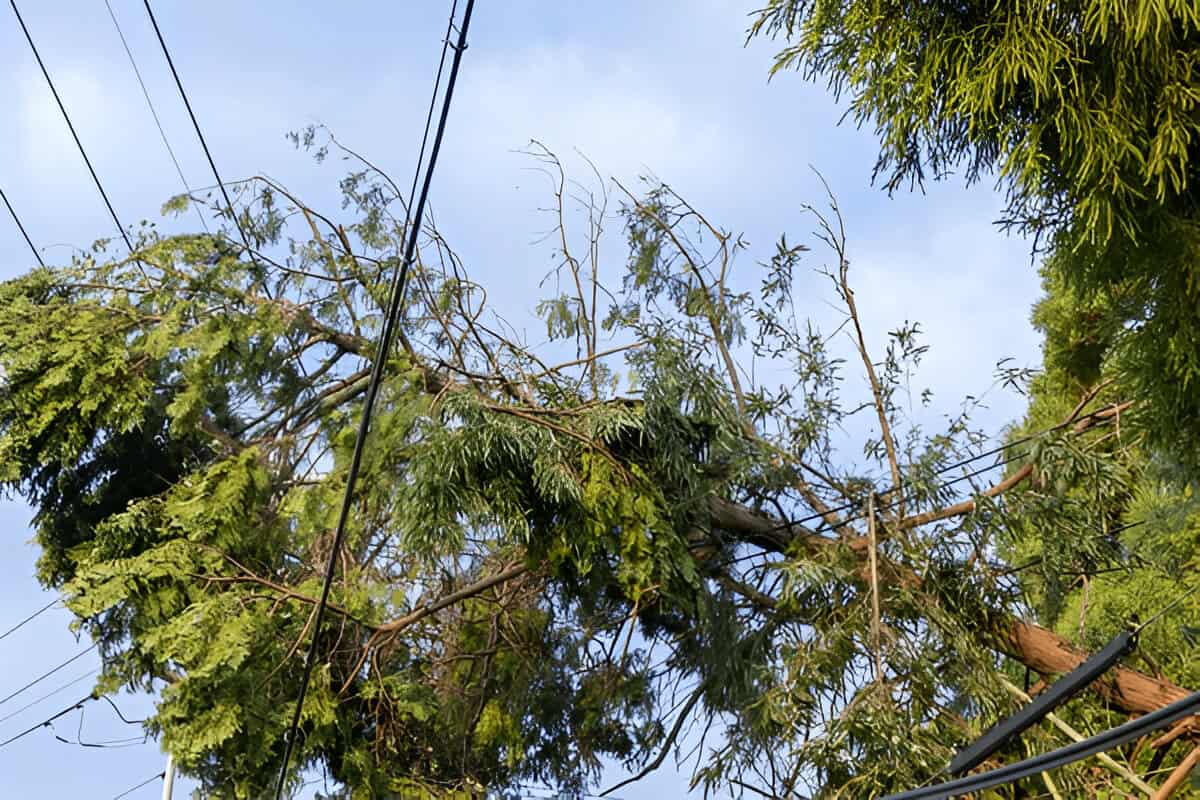Imagine this: a powerful storm rolls through your neighborhood, and afterward, you notice a tree leaning dangerously close to a power line. Or worse, it’s already hit the line. It’s a sight that can make your heart race—and for good reason. Trees and power lines are a risky mix, and knowing what to do in this situation can keep you and your family safe.
Why It’s Dangerous When Trees Touch Power Lines
First off, let’s talk about why this is such a big deal. Power lines carry a lot of electricity—we’re talking anywhere from 7,200 to 12,000 volts on average for distribution lines. That’s enough to seriously injure or even kill someone. When a tree touches a live power line, the electricity can travel through the tree, turning it into a giant conductor. This can cause fires, power outages, or worse, create a deadly hazard for anyone who gets too close.

In fact, according to the U.S. Federal Emergency Management Agency (FEMA), about 20% of power outages in the United States are caused by trees falling on power lines. And during storms or hurricanes, that number shoots up dramatically. Knowing this, it’s clear why it’s important to handle these situations carefully.
What to Do If You See a Tree on a Power Line?
Let’s say you’re walking outside after a storm, and you see a tree has fallen on a power line. What should you do? The first thing is to stay calm and stay back. You might feel the urge to get closer to inspect it, but that’s not safe. Electricity can travel through the ground near a downed line, so it’s best to stay at least 30 feet away. That’s about the length of a school bus.
Next, call your local utility company right away. Many companies have emergency hotlines for situations like this. You can usually find the number on your electric bill or their website. Don’t assume someone else has already reported it—it’s better to be safe than sorry.
And here’s something really important: don’t try to remove the tree yourself. Even if it looks like the power line isn’t sparking or damaged, it could still be live. Only trained professionals with the right equipment should handle this kind of work. In one incident reported by the National Safety Council, a man in Texas tried to cut a branch off a power line and ended up in the hospital with severe burns. It’s just not worth the risk.
How Utility Companies Handle the Problem?
When you report a tree on a power line, your utility company will send out a crew to take care of it. These workers are trained to handle dangerous situations safely. They’ll assess the damage and often use specialized equipment like insulated poles or bucket trucks to remove the tree without putting anyone in danger.
In some cases, they may need to shut off power to the affected area. This might feel inconvenient, but it’s a crucial step to make sure the job gets done safely. According to the U.S. Department of Energy, most outages caused by fallen trees are fixed within a few hours, but severe cases can take longer—especially if the storm has caused widespread damage.
How You Can Prevent Tree-Related Power Line Issues?
The best way to deal with trees and power lines is to prevent problems before they happen. If you have trees in your yard, make sure to trim them regularly. Experts recommend keeping branches at least 10 feet away from power lines. Don’t try to do this yourself, though—call a professional arborist who knows how to work around electricity safely.
Planting new trees? Choose the right spot. Look up and check for power lines before you plant. Some trees can grow 60 feet tall or more, so make sure you’re not planting something that’s going to be a problem down the road.
A Real-Life Example: The 2003 Northeast Blackout
Let’s look at an example of how serious this issue can get. In 2003, a massive blackout hit the northeastern United States and parts of Canada. Over 50 million people lost power. What caused it? A tree branch came into contact with a high-voltage power line in Ohio. That one small event triggered a chain reaction that led to the largest blackout in North American history. This shows how even a single tree can have a huge impact.
Final Thoughts
Dealing with trees and power lines is serious business, but it’s not something you have to handle alone. Remember, your safety comes first. Stay back, call the experts, and let them do their job. And if you take steps to keep your trees trimmed and planted in safe spots, you can help prevent problems before they start. When it comes to electricity, it’s always better to be cautious and prepared.

